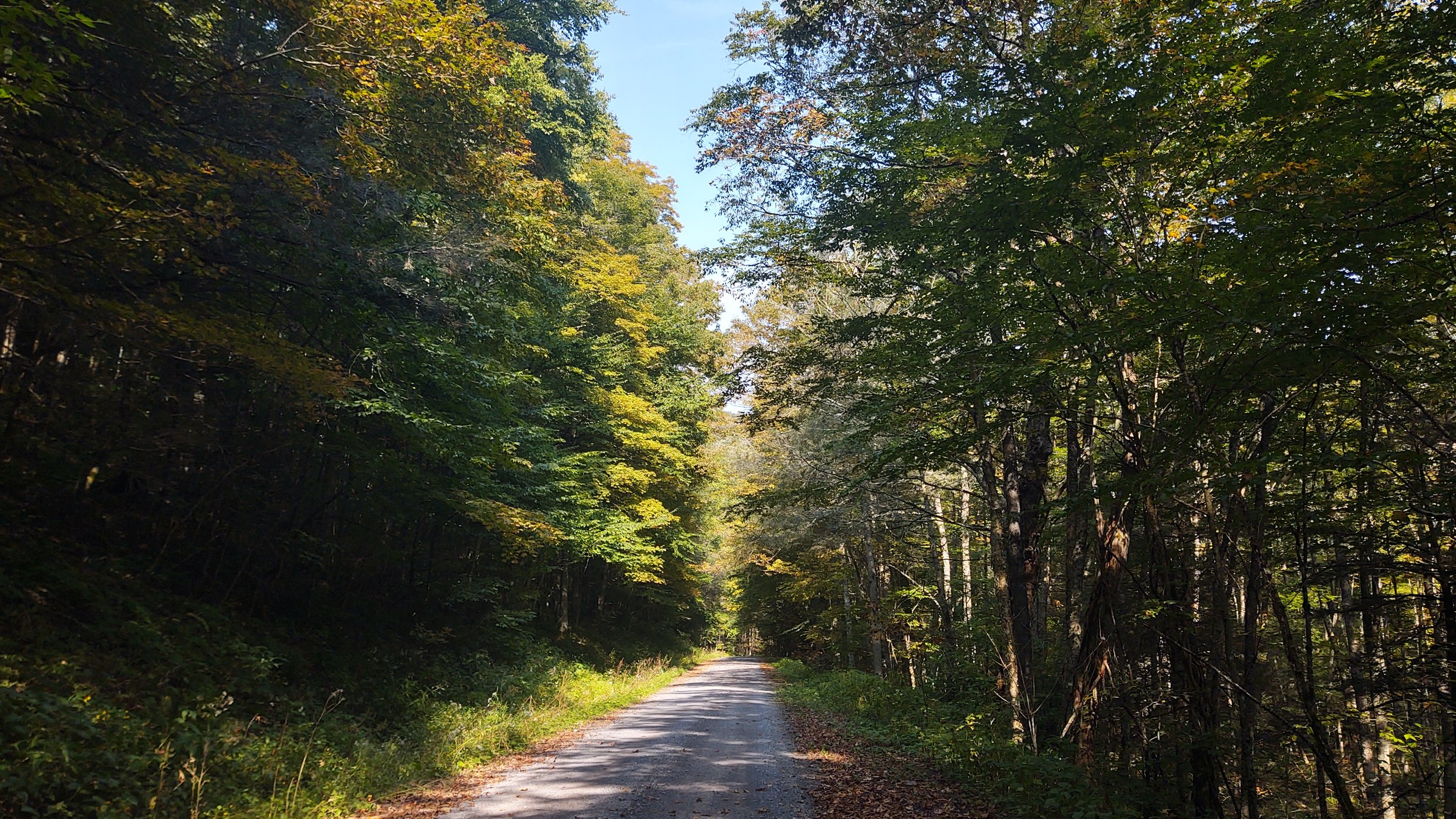Cranberry Backcountry Loop
This route is approximately 62 miles with 3700 feet of climbing and circumnavigates the Cranberry Wilderness in West Virginia. It can be ridden in one day, however; the route can easily be split into an overnight bikepacking trip as there are ample camping opportunities along the route as well as close to the route. The route can also be significantly extended by incorporating many of the other forest service roads in the area.
I was in West Virginia visiting family for about a week and had a completely free day. The weather forecast predicted sunny skies and cool temperatures and I was within an hour and a half drive from my favorite ride. So I got up early and drove to the Cranberry Wilderness area of West Virginia.
I arrived at the Cranberry Glades parking lot before 9AM with my dash temperature gage reading a crisp 49 degrees. The Cranberry Glades Botanical Area, which is the headwaters of the Cranberry River, protects the largest area of bogs in West Virginia. The bogs are acidic wetlands more commonly found in the northern areas of the United States and Canada. Because of its unique conditions, some unusual plants grow in the bogs, including carnivorous or insect-eating plants. There is a boardwalk that takes you through the bogs and I highly recommend that if you are in the area you take the time to explore this unique place.
Starting the ride from the parking lot and heading to the Highlands Scenic Highway, I immediately experienced an invigorating climb of over a 1000 feet of elevation in the first five miles. The climb took me to about 4200 feet of elevation with several spectacular views of the Greenbrier River Valley to the east. I then dropped down into the Williams River headwaters and followed the river for over 30 miles watching it grow in size from a small creek to a beautiful and fast flowing river. After the initial steep drop of several miles, the ride then turned into a nice downhill ride that follows the grade of the river. There is one steep climb of 10%+ grade between the Day Run Campground and the Tea Creek Campground, but I was rewarded with a fantastic multi-mile downhill on a smooth and fast road that took me to the Tea Creek Campground.
I stopped at the campground for lunch having brought an extra sausage, egg and cheese biscuit from Tudors Biscuit World in Fayetteville, a West Virginia classic. While I was enjoying the scenery and relaxing at one of the picnic tables, I heard some branches creaking and crashing in a nearby tree. Upon further examination, I realized that it was some apples falling out of the tree (gravity still works!) so I went over and started to investigate. I found a couple of apples and one was in very good condition so I took a bite and was quickly reminded of how much I love the crisp sweet and tart taste of the old country apples throughout West Virginia. It was obvious that the Tea Creek Campground is located on an old homestead because there are apple trees everywhere on the flats near the river.
When I was growing up, we used to go to my grandmother’s old homestead in Roane County, WV and pick apples from an abandoned orchard that was slowly being consumed by the forest. We could get a few bushels of apples and we would spend the next few weeks making apple butter and apple sauce. Finding that apple and experiencing that long lost taste brought those great memories back for a few minutes making my break along the Williams River even more enjoyable.
The Tea Creek Campground is very nice containing two loops of campsites in the forest that are nicely spaced. It also has pit toilets and an old classic hand pump for fresh water. The Dry Run Campground is also nice but it only has pit toilets and no fresh water. There are also many dispersed camping sites along the Williams River with pit toilets near several of them.
In Dyer, WV, I cut across the Williams River and started the long climb to the top of Bishop Knob. The climb takes awhile but it never really gets above 8% grade. Once again, I was rewarded for climbing by having another multi-mile downhill ride that took me to the Cranberry River. From there, I started going upstream following the Cranberry River on a forest service road that has a continuous 1-4% grade over the approximately 15 miles back to the Cranberry Glades parking lot. Along the way, I passed the Cranberry Campground, which is also very nice but more open than Tea Creek. There are also pit toilets and a fresh water pump available.
Just up river from the campground there is a gate that marks the entrance to the Cranberry backcountry. Only forest service vehicles are allowed past this gate so for the next 10+ miles there are no cars; however, I did pass a wagon being pulled by a mule team. There were several folks in the wagon sitting on bag chairs and one of the nice ladies offered me water. I had just filled my bottles at the Cranberry Campground so I asked for a beer instead. Unfortunately, luck wasn’t with me that day. I also passed several of the backcountry camping shelters that are free to use. Over the past two years, the forest service has upgraded these shelters and they are in amazing condition. Each one also has a pit toilet near it making these great options for camping on a multi-day bikepacking trip. I continued my journey up the beautiful and remote Cranberry River arriving at the glades parking lot around 4:30PM.












